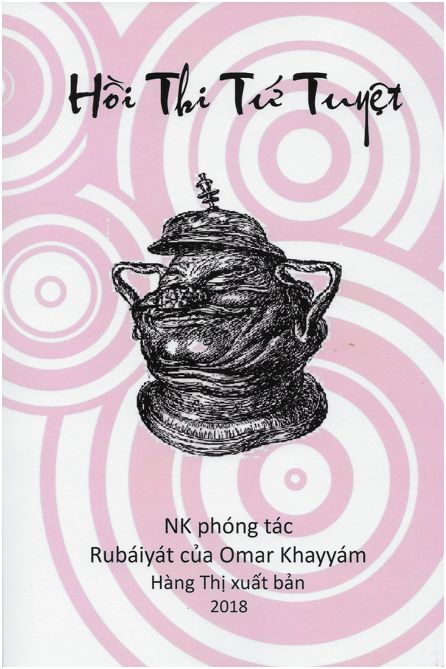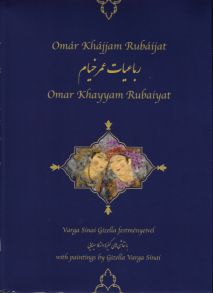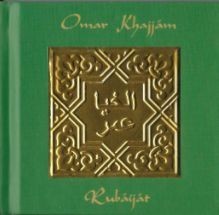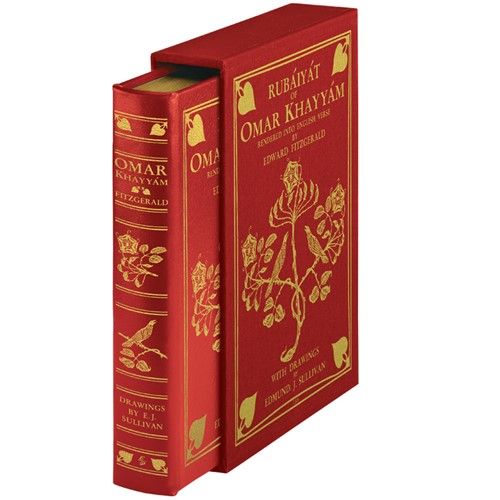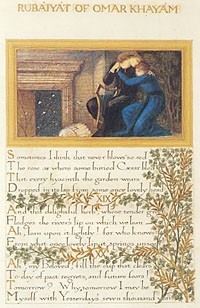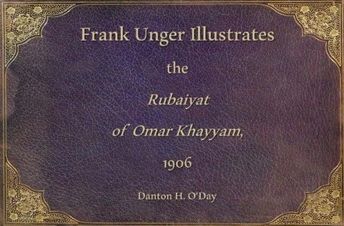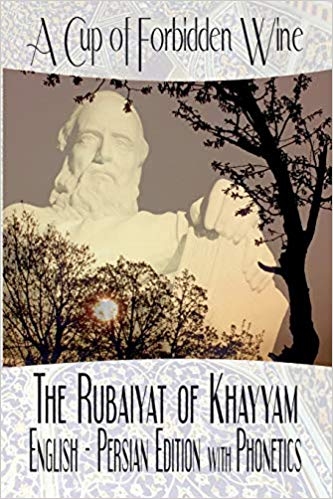Hoi Thi Tu Tuyet. NK phong tac Rubáiyát cua Omar Khayyám. N.K. Trang. Henrico : Hang Thi, 2018. – 81 p.; 20 cm.; illustrated. – ISBN: 978-1-949875-03-4
Selection of translations by Avery&Heath-Stubbs (61), FitzGerald (10), Shahriari (10) and Thompson (10). For a number of quatrains parallel translations by others are given.
Omar Khayyam Rubaiyat. With paintings by Gizella Varga Sinai. Compiled by Németh Ágnes. Budapest, Kossuth Kiadó, 2018. – [unpag.] vii, 117 p.; 53 single page illustrations and 3 double page illustrations; 30,5 x 21,5 cm. – ISBN: 978-963-09-9198-8.
60 quatrains. – All pages decorated. Title page, foreword etc. in English, Hungarian and Persian
Omar Khajjám. Rubáiját. Szabó Lörinc fordítása. [S.l.] : Privately printed, [2018]
[144 p.]; 8.5 x 9 cm.; 17 illustrations in colour.
110 quatrains
Omar Chayyam. Vierzeiler. Übersetzt von Adolf Friedrich Graf von Schack. [Edited by Karl-Maria Guth]. Berlin, Contumax – Hofenberg, 2018. – 2,5 x 16 cm.; 88 p. – ISBN: 978-3-7437-2477-8.
336 quatrains. – Reprint based on the 1878 edition by Von Schack, with a ‘Biographie’, p. 87-88
Rubáiyát of Omar Khayyám. Rendered into English verse by Edward FitzGerald. With drawings by Edmund J. Sullivan. London, Methuen & Co., [Easton Press], 2018. – 300 p.; 75 illustrations in black and white ; 26 x 20 cm.
75 quatrains. – Reprint of the 1913 edition published by Methuen & Co. Issued in a case, red cloth. Frontisp. in colour.
Rubáiyát of Omar Khayyám. [Translated by Edward FitzGerald; decorated by William Morris]. London, Folio Society, 2018. – [23] p.; 16,5 x 12 cm.
75 quatrains. – This edition of The Rubáiyát of Omar Khayyám is a facsimile of British Library Add MS 37832, created in 1872. It employs the translation of Edward Fitzgerald, first published in 1859. It was calligraphically written by William Morris and decorated by him with painted and illuminated borders. The figures in the borders were designed by Morris and Sir Edward Burne-Jones, and were painted by Charles Fairfax Murray.
Frank Unger illustrates the Rubaiyat of Omar Khayyam, 1906. [Translation Edward FitzGerald] Danton O’Day. Emeritus Books, 2018. – [96 p.]; 86 illustrations in colour; 23 x 15 cm. – ISBN 978-0-46-471984-7.
From FitzGerald’s 1872 and 1879 versions. – 75 quatrains
A Cup of Forbidden Wine: The Rubaiyat of Khayyam (English – Persian Edition with Phonetics). Sajjad Khojasteh. [S.l.], Createspace, 2018. – 111 p.; 23 x 15 cm. –
ISBN: 9781724386540
111 quatrains. – Persian edition with phonetics. Based on the Ghazvini and Ghani edition, with FitzGerald’s version
– To the readers (in persian), p. ii
– Description, p. iii
– Phonetic symbols, p. iv
– Omar Khayyam, The Astronomer-Poet of Persia, p. vi
– Alphabetical list of first hemistich, p. xvi
– The rubaiyat, p. 1
– More adaptations by Edward FitzGerald, p. 79
– About the author, p. 96
Learn How to Read Rubaiyat of Khayyam. The Best Guide for Reading Poems of Khayyam with Phonetics. Sajjad Khojasteh. [S.l.], Createspace, 2018. – 106 p.; 23 x 15 cm. – ISBN: 9781724200747
178 quatrains. – Persian edition with phonetics. Based on the Ghazvini and Ghani edition.
– To the readers (in persian), p. ii
– Description, p. iii
– Phonetic symbols, p. iv
– Omar Khayyam, The Astronomer-Poet of Persia, p. vi
– Alphabetical list of first hemistich, p. xvi
– The rubaiyat, p. 1
– About the author, p. 90
Dis-contenting Khayyam in the Context of Comparative Literature. An Invitation to Translating Rubaiyat with a Focal Shift from Content to Form. Sajad Soleymani Yazdi
In: International journal of comparative literature and translation studies, 7 (2018) 1, p. 24-30
Abstract
Since its conception in France in 1877, Comparative Literature, always subject to a critique of Eurocentrism, has been in a state of perpetual crisis. In “The Old/New Question of Comparison in Literary Studies: A Post-European Perspective” (2004), Ray Chow argued for a Post-European perspective in which comparatists begin with the home culture and look outwards to the European cultures, contrary to the dominant approach of doing just otherwise. Missing in Chow’s argument is the position of translation in this post-European perspective. In the 14 years between 2004 and 2018, the grandiose claims of comparative literature have been problematized and addressed; the lay of the land, however, remains predominantly Eurocentric, as it still focuses on content disproportionately. In this paper, through a study of English translations of Khayyam’s Rubaiyat, and taking Chow’s argument further, I argue that with its commitment to transfer the form of a text as much as the content, translation studies can further help comparative literature to distance itself from Europe. To exemplify the implication of this, I suggest that a translation of Khayyam’s Rubaiyat from Farsi to English would be more faithful to the original if its translations were to focus on the poem’s form rather than the content. I argue that translating with a focus on form would foreignize Khayyam’s poetry, hence an act of resistance against cultural hegemony.
